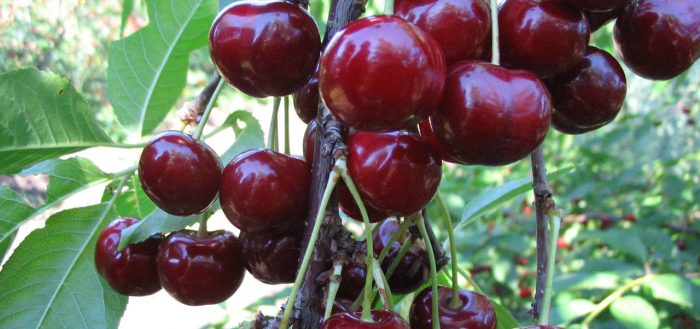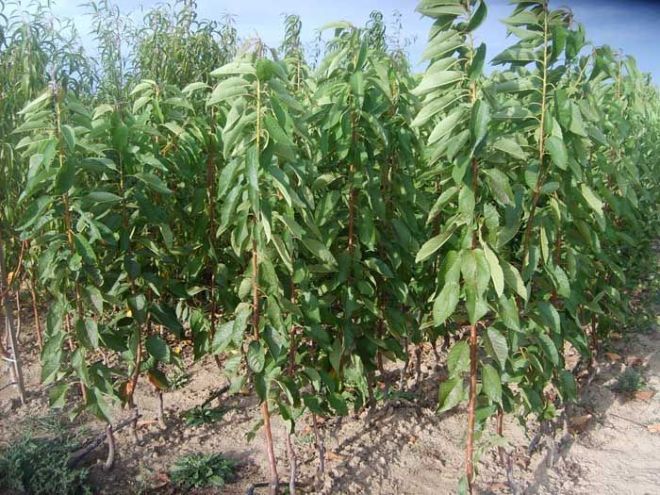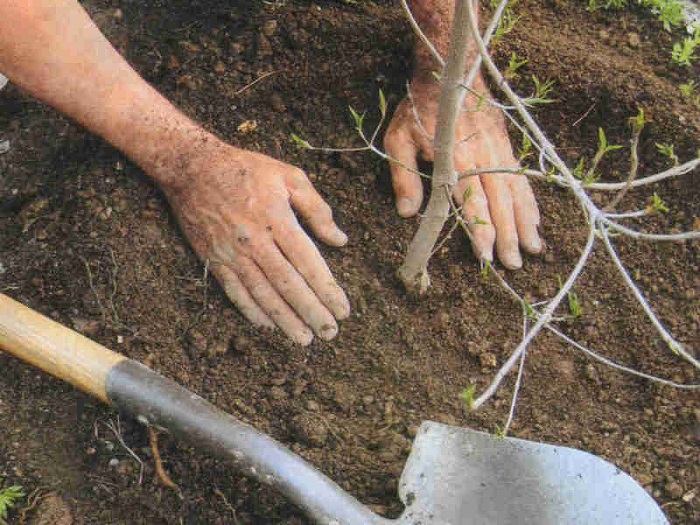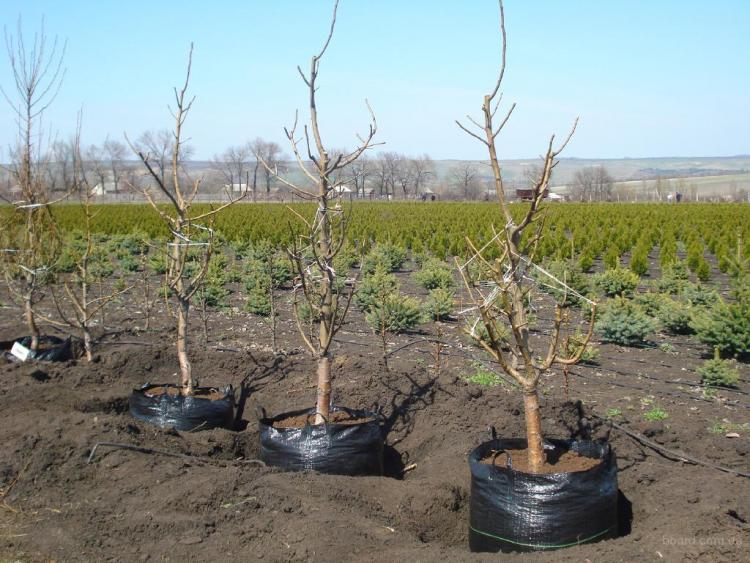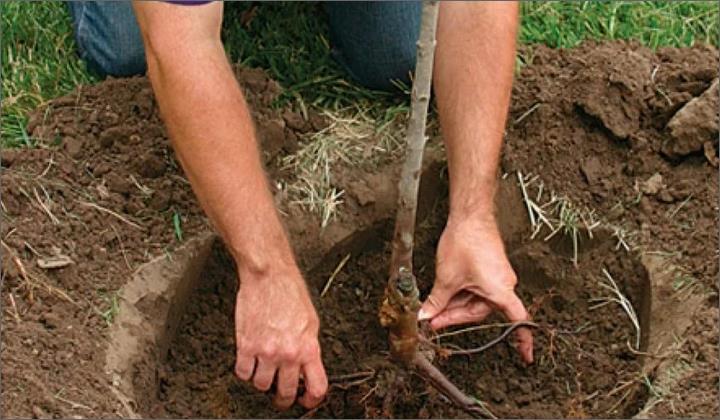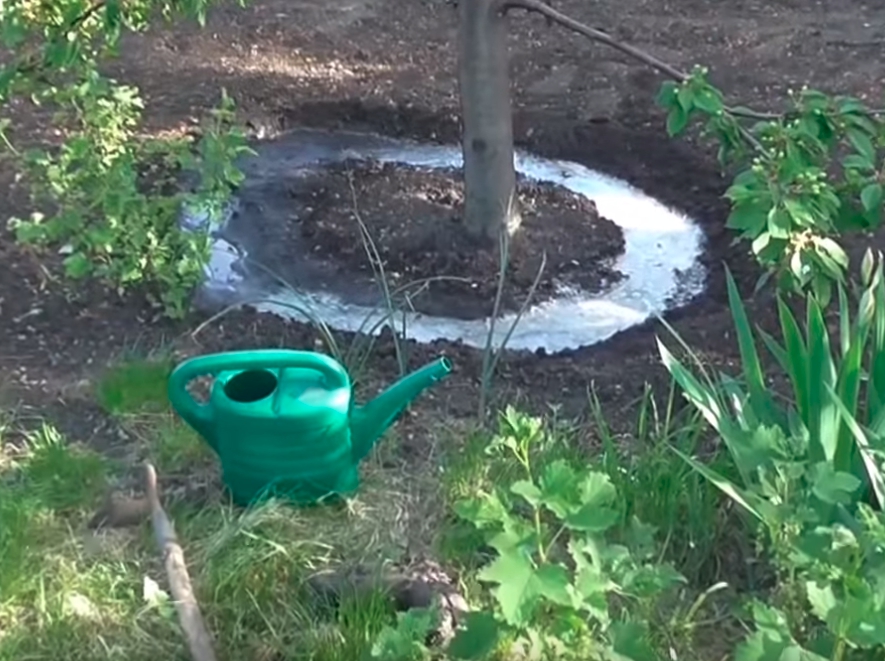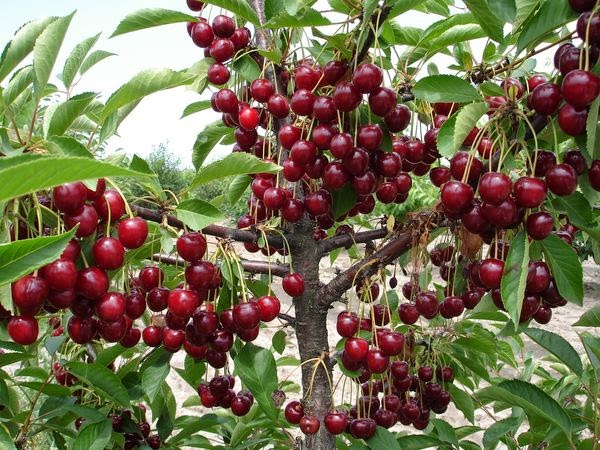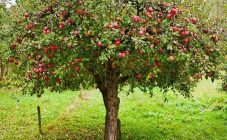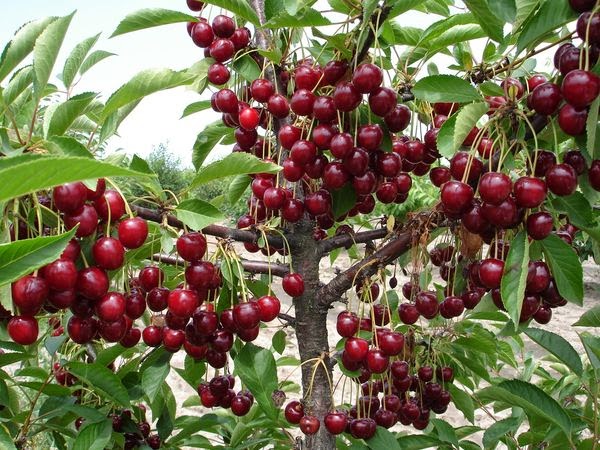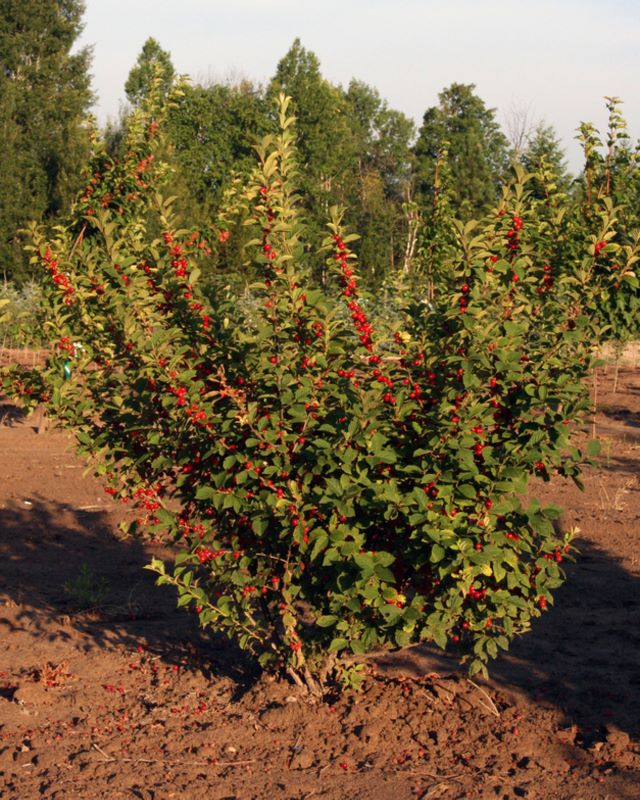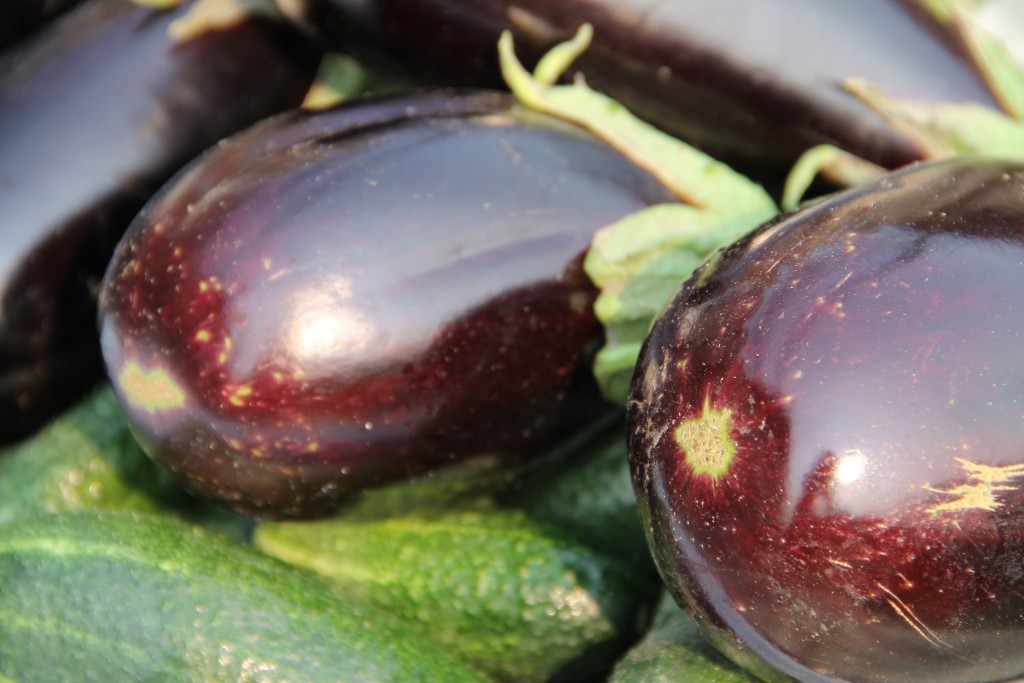Content:
Cherry is the most popular stone fruit crop found in almost every garden plot. She is absolutely unpretentious and does not require complex care. Fruits are in demand fresh and for the preparation of jam, compotes, marmalade and jelly for the winter. However, in order to achieve stable fruiting, seedlings should be planted following the recommendations and rules. Instructions on how to plant cherries in spring (step by step guide) will help you avoid common mistakes.
Characteristic
Cherry is a shrub or tree whose height does not exceed 6.5-7 m. Cherry fruits have a rounded shape of dark red color. The bright glossy skin of the berry covers the delicious juicy pulp and small bone.
Sweet and sour fruits ripen towards the end of June. Fruit is extremely beneficial for the body. The high content of anthocyanin pigment in their composition makes it easy to assimilate. Refers to dietary products. In addition, hematopoietic substances are found in cherries that help to cope with anemia, arterial atherosclerosis. With the help of cherries, you can quickly increase hemoglobin, stop blood and strengthen capillaries, which is very important in diseases of the cardiovascular system. Freshly squeezed cherry juice has a laxative and expectorant effect.
Pollination classification
Abundant flowering of the tree is not a guarantee of a good harvest. In the absence of pollination, only 25% of the flowers will eventually become fruit. If a paired pollinator plant is located nearby, the percentage of berries will increase to 50%. Taking into account the type of tree, experts have identified 2 categories:
- self-infertile;
- self-fertile.
The self-infertile type is a representative of the cross-pollinated crop category. Fruit setting is possible only if there is another variety near the plant, which can act as a pollinator.
A self-fertile type is a type that can become a pollinator for nearby shrubs of the same variety. However, experts believe that for every 8-10 trees of one variety, it is best to plant a couple more shrubs of another variety. The flowering period of all seedlings should be the same.
The best self-fertile varieties of cherries are:
- Lyubskaya;
- Chocolate girl;
- Brunette;
- Youth;
- Baby (columnar type);
- Assol;
- Memory of Yenikeev.
The best self-fertile varieties:
- Alpha;
- Miracle;
- Leningrad grade;
- Alice (felt look);
- Saratov;
- Ural;
- Chernokorka (very sweet cherry);
- Vladimirsky.
When to plant cherries is a question that worries any novice gardener. Experts believe that it is easier for a seedling to take root in the spring. Autumn, due to the upcoming frost soon, is not the best time for planting.
How to choose the right seedling
Cherry is a frost-resistant crop. Despite this statement, it is best to purchase a variety that grows successfully in the planting region. When choosing, you need to carefully inspect the seedlings, which must meet the basic requirements:
- the presence of damage to the bark in any part of the trunk is unacceptable;
- the age of the seedling should be within 1-2 years;
- the height of the bush is 1.3-1.4 m (with improper care, the seedling will be lower);
- trunk width 1 cm;
- it is desirable to have 3-5 well-developed roots, but it is best to buy a cherry with a closed root system.
Choosing a landing site
Cherry is a thermophilic tree, which is why it is worth choosing open and well-lit areas for planting seedlings that are protected from drafts. And it is worth doing this before buying a young tree, since the cherry does not tolerate multiple transplants.
Before disembarking, it is worth asking about the groundwater level in the area (should be within 2 m from the ground surface). Otherwise, the water, which will be near the root system of the tree, will wash away the soil after 2-3 years, and the shrub will die.
What kind of neighborhood would be undesirable
It is very important to choose the right neighbors for the cherry. Not every crop has a beneficial effect on seedling development. In some cases, the full growth of the crop is hampered by nearby plantings. It is not recommended to plant young cherries in the vicinity of:
- apricot;
- peach;
- walnuts;
- pear;
- plum;
- cherry plum;
- black currant.
If you observe the distance between plantings of 4 m, then you can plant a tree next to an apple tree and a gooseberry.
At what distance to plant
How to plant cherries correctly in spring? The first thing to consider is that cherries require individual space. If you plant a seedling too close to a nearby shrub, the cherry will begin to stretch, and the formation of berries will be concentrated exclusively in the upper part of the tree. The distance between the trunks should be within 3-3.5 m. The rows are formed at about the same distance.
Recommended soil composition
What soil does cherries like:
- loam;
- sandy loam soil with acidity at a neutral level;
- black soil.
If the cherry will be planted in sandy soil, top dressing should be applied every year.
Preparing the landing pit
How to properly plant cherries in a hole? Prepare a site for a fruit tree a couple of weeks before planting. For this you need:
- dig up the soil to the depth of the shovel;
- remove weed roots, including near the hole;
- adjust the size of the pit, which should be 80 cm wide and 45-50 cm deep;
- drive a wooden support near the pit.
Top dressing
After planting cherries, it needs a lot of energy and strength to take root and move on to the growing season. That is why, after planting, it is so important to apply fertilizers that will provide the culture with nutrients. To prepare a super nutritional formula, you will need to prepare:
- 250 g of manure, which is quail;
- 250 g of leafy earth;
- 150 g superphosphate.
To the resulting soil mixture, add 100 g of potassium sulfate and a couple of shovels of the top layer of the earth, in which the tree was planted. All components are well mixed to form a uniform composition, and then pour the fertilizer into the hole.
Cherry: planting and care in the open field
How to plant cherries correctly so that the tree grows healthy? Below is a step-by-step guide:
- Check the condition of the root system of the seedling, as any damaged parts must be removed with a pruner.
- Before planting cherries, dip their roots in a clay and manure-based mash (1: 1 plus 3 liters of water).
- After placing the roots of the tree in the hole, cover with soil from the bottom layer of the earth, then sprinkle with fertilizer and compact the soil.
- Tie the seedling to a wooden peg.
- Form a near-stem hole.
- Drizzle with 2-2.5 buckets of water.
- After the soil has dried, cover the hole with sawdust.
Having planted the seedling correctly, it is important to provide it with further care in order to get a hefty crop. Cherry care recommendations:
- water the young tree abundantly for the first 2 years (during the season, you will have to add 2 buckets of water at least 12-13 times);
- regularly loosen the near-stem zone;
- take care of the crown: shape it and promptly remove broken or dried branches;
- exactly one year after planting, carry out spring pruning, leaving 8 evenly spaced shoots;
- 12 months after planting, add nitrogen fertilization to the soil;
- in April or May, whitewash the trunks by adding copper sulfate to the solution (1 tsp).
If the tree is planted in the Volga region, then this procedure is best carried out in early April. The region is famous for the prevalence of early drought, which can negatively affect the rooting of the seedling.
For planting cherries in the Moscow region (the middle lane - the same conditions), it is best to wait until mid-April, since there is a high probability of late frosts. In the harsh conditions of the Urals and Siberia, it is worth postponing planting until mid-May and purchasing a winter-hardy stone fruit variety for planting.
Typical Landing Errors
Inexperienced gardeners, when planting a seedling, make mistakes that harm the seedling and have a negative impact on the development of culture. The most common ones are:
- applying a large amount of fertilizer when planting a tree, which negatively affects the root system;
- buying a seedling that is more than 2 years old (the tree will adapt to a new place for a long time, which will lead to a decrease in immunity);
- neglect of recommendations regarding planting dates, which often leads to the death of cherries in the same year;
- ignoring information that a self-fertile variety needs a pollinator neighbor.
Pests and diseases
Cherries are susceptible to a variety of diseases that seriously harm the fruit tree. Below is information on the main diseases of cherries and methods of dealing with them.
| Disease | Control methods | Preventive measures |
|---|---|---|
| Brown spot | The tree is completely cleared of diseased foliage. The culture and the near-stem soil are treated with Bordeaux liquid in stages: when the buds open, after the culture fades and 14 days after the second treatment. | Fungicide treatment at the end of March. |
| Clasterosporium disease | All affected branches must be removed with a saw. Sections are processed with a 1% solution of copper sulfate. After that, we carry out a three-time treatment with garden pitch. The interval between procedures should be 10-15 minutes. We completely process the cherries with Bordeaux liquid. | Treatment with fungicides before flowering. The instructions must be read before spraying. |
| Coccomycosis | After the petals of the flowers have fallen, it is necessary to spray using a solution of the Horul preparation (12 liters of water will be required for 3 g).Re-spraying is carried out 21 days after flowering (in Siberia, the second spraying is in June) and 21 days after the last harvest was carried out. | After the leaves fall off in the fall, we whitewash the cherry trunks with a mixture of izvetsi and copper sulfate. This will get rid of the fungal spores that are located in the cracks in the bark. |
| Scab | The Bordeaux liquid treatment was carried out in three stages. | We remove densely spaced branches to improve ventilation. |
| Witch's broom | We remove the affected branches and process the cherries with a 5% solution of ferrous sulfate. | Before each pruning of cherries, we disinfect the secateurs. |
Pests can do no less harm to cherries.
| Pest | Control methods | Preventive measures |
|---|---|---|
| Plum moth | We carry out abundant processing with such means as Ambush, Tsitkor, Anometrin. | Systematic collection of volunteers. |
| Cherry weevil | After the tree has flowered and 10-12 days after the previous treatment, we spray the fruit tree with preparations like Ambush and Rovikurt. | We burn the fallen leaves, remove the carrion in a timely manner. |
| Cherry aphid | We spray cherries with Karbofos, Aktellik, Rovikurt or Ambush. | Periodic treatment with insecticides. |
Proper care of cherries, timely watering and feeding will allow you to grow a healthy tree. The gardener will be rewarded with a bountiful harvest of large berries.

